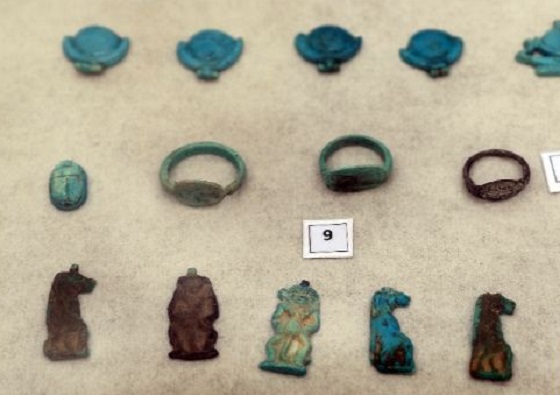
Cairo: The Egyptian Ministry of Antiquities officially opened an ancient pharaonic tomb discovered recently at the Saqqara Necropolis near the Giza Pyramids.
The tomb, which belonged to an official named Khuwy who lived at the end of the Fifth Dynasty of the Old Kingdom, was inspected by Egyptian Minister of Antiquities Khaled al-Anany alongside 52 ambassadors and cultural attaches from around the world.
The tomb was found by Egyptian archaeologists during an excavation and documentation survey in Saqqara.
The Old Kingdom of Egypt is the period spanning 2686 BC to 2181 BC, which is also known as the Age of the Pyramids.
The burial place consists of a superstructure with an L-shaped offering chamber, which was once decorated with reliefs. Only the bottom part of this decoration is preserved because of re-use of its white limestone blocks in later times in antiquity.
On the north wall of the tomb, the mission found the entrance to a unique substructure, which is for the first time clearly inspired by the design of the substructures of the royal pyramids of the Fifth Dynasty, Mostafa Waziri, secretary-general of the Supreme Council of Antiquities, said.
The tomb's discovery highlights the importance of King Djedkare's era and the end of the Fifth Dynasty in general, he said.
Meanwhile, al-Anany said his ministry will announce two new discoveries in Luxor on 18 April to mark the World Heritage Day.
"The ministry will open all museums and archaeological sites in Egypt for free for Egyptians as well as Africans, Arabs and foreigners who are living in Egypt in celebration of the World Heritage Day," al-Anany revealed.
Egypt, one of the world's oldest civilizations, has been working hard to preserve its archaeological heritage and discover the secrets of its ancient artifacts.
Over the past few years, the country has witnessed several major archaeological discoveries that have included tombs, statues, coffins, mummies, burial sites and funerary gardens.